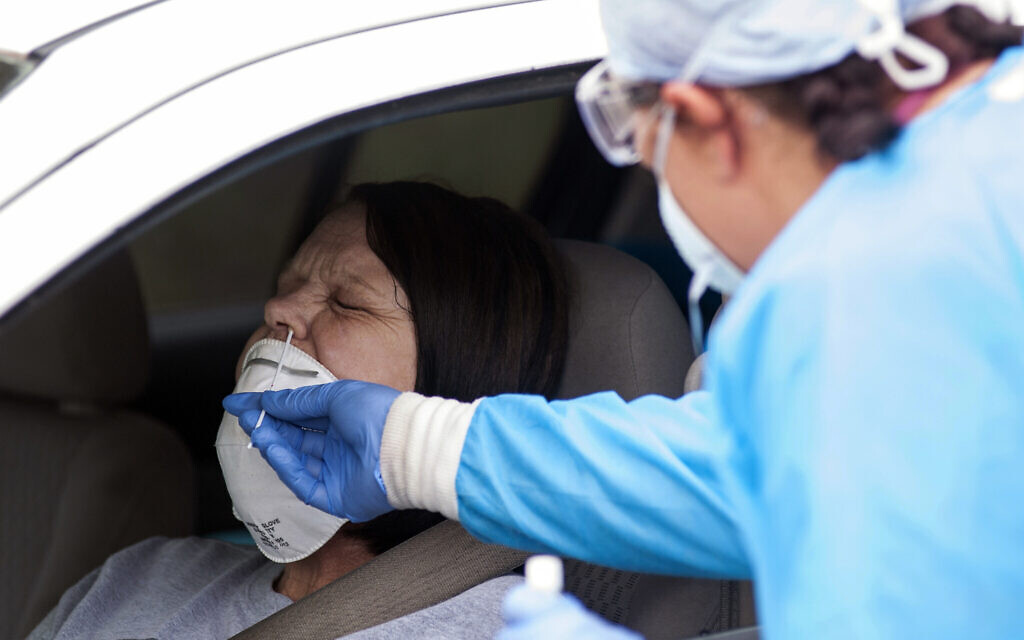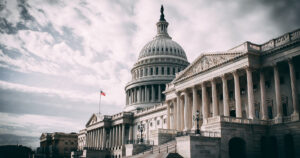New York (AP) — States are rolling back lockdowns, but the coronavirus isn”t done with the US.
Cases are rising in nearly half the states, according to an Associated Press analysis, a worrying trend that could intensify as people return to work and venture out during the summer.
In Arizona, hospitals have been told to prepare for the worst. Texas has more hospitalized COVID-19 patients than at any time before. And the governor of North Carolina said recent jumps caused him to rethink plans to reopen schools or businesses.
There is no single reason for the surges. In some cases, more testing has revealed more cases. In others, local outbreaks are big enough to push statewide tallies higher. But experts think at least some are due to lifting stay-at-home orders, school and business closures, and other restrictions put in place during the spring to stem the virus”s spread.
The increase in infections pulled stocks down sharply Thursday on Wall Street, dragging the Dow Jones Industrial Average more than 1,500 points lower and placing the S&P 500 on track for its worst day in nearly three months. The infections dampened recent optimism that the reopening of businesses would drive a relatively quick economic recovery.
The virus is also gradually fanning out.
“It is a disaster that spreads,” said Dr. Jay Butler, who oversees coronavirus response work at the U.S. Centers for Disease Control and Prevention. “It”s not like there”s an entire continental seismic shift and everyone feels the shaking all at once.” That is also happening globally. Places that suffered early on such as China, Italy and Spain have calmed down but Brazil, India and other countries that were spared initially are seeing large increases. The world is seeing more than 100,000 newly-confirmed cases every day, according to data from Johns Hopkins University. The virus first landed on the U.S. coasts, carried by international travelers infected abroad. For months, the epicenter was in northeastern states. More recently, the biggest increases have been in the South and the West.
The AP analyzed data compiled by The COVID Tracking Project, a volunteer organization that collects coronavirus testing data in the United States. The analysis found that in 21 states as of Monday, the rolling seven-day average of new cases per capita was higher than the average seven days earlier.
Some worry the situation may get worse as social distancing restrictions lift and more people gather. One concern is that large recent racial justice protests across the country might spark at least some spread of the virus.
Another: President Donald Trump this week said he”s planning to hold rallies that may draw thousands of people. He will hold them in four states — Arizona, Florida, Oklahoma, and Texas. All of them are among the states with rising cases identified in the AP analysis. Here”s what”s driving increases in some of the states with notable upticks: ARIZONA
Republican Gov. Doug Ducey ended Arizona”s stay-at-home order on May 15 and eased restrictions on businesses. Arizona residents who were cooped up for six weeks flooded Phoenix-area bar districts, ignoring social distancing guidelines. The state began seeing a surge of new cases and hospitalizations about 10 days later.
“It seems pretty clear to me that what we”re seeing is directly related to the end of the stay-at-home order,” said Will Humble, executive director of the Arizona Public Health Association. It wasn”t just that the order ended: There were no requirements to wear face masks, no major increases in contact tracing to spot and stop evolving outbreaks, and no scale-up of infection control at nursing homes, he said. “Those are missed opportunities that, if implemented today, could still make a big difference,” said Humble, a former director of the state Department of Health Services. Testing has been increasing in Arizona, which raises the chance of finding new cases. But the proportion of tests coming back positive has also been on the rise.
The AP analysis found Arizona had a rolling average of fewer than 400 new cases a day at the time the shutdown was lifted, but it shot up two weeks later and surpassed 1,000 new cases a day by early this week. Hospitalizations have also risen dramatically, hitting the 1,200 mark last week.
The state also passed another grim milestone last week, recording its 1,000th death.














